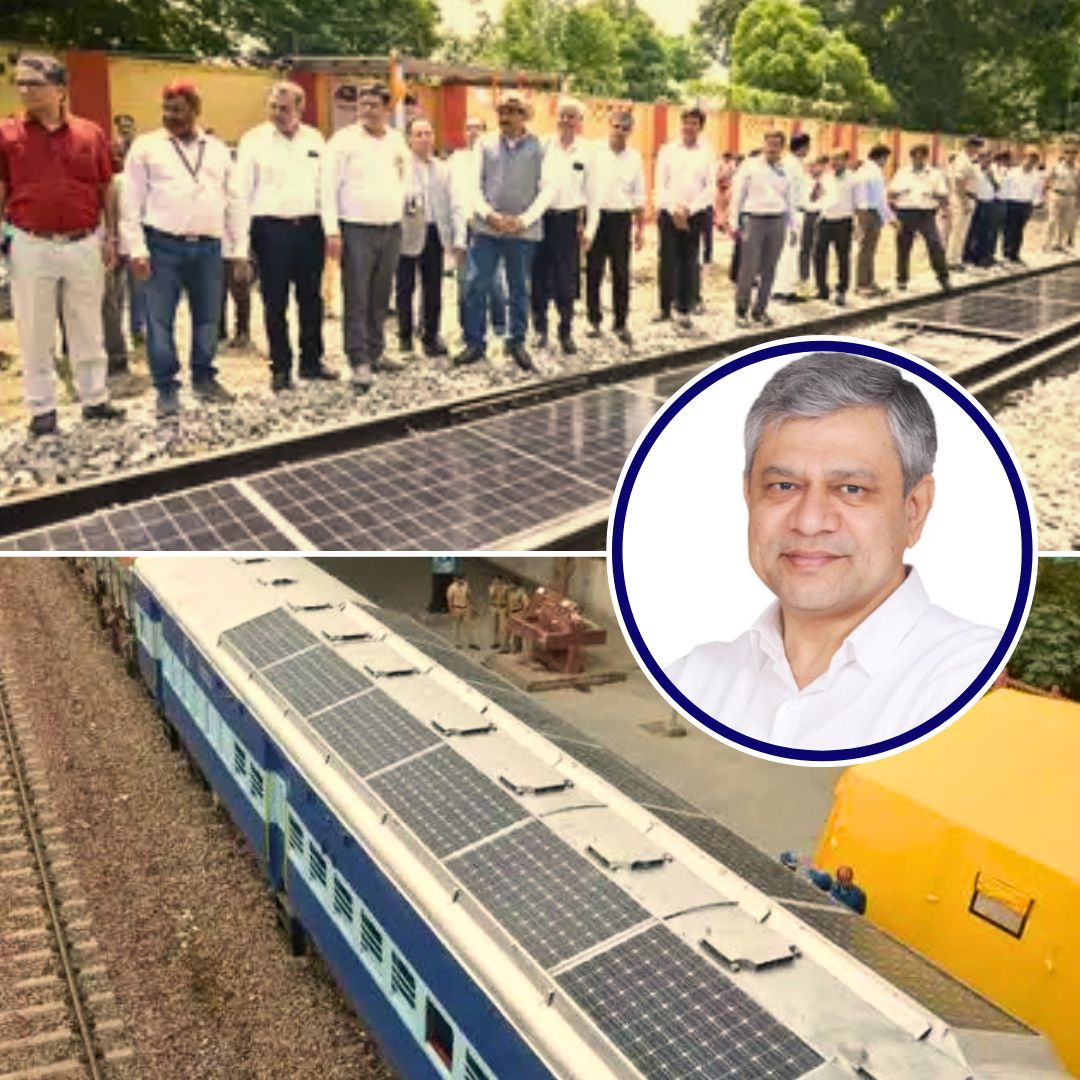Indian Railways has taken a bold leap towards sustainability by installing the first removable solar panel system between railway tracks in Varanasi, Uttar Pradesh, on 15 August 2025.
The pilot initiative, run by Banaras Locomotive Works (BLW), features a 70-metre-long stretch of 28 indigenously developed panels producing a combined 15KWp of clean energy.
Officials say this innovation, requiring no additional land and not interrupting train services, positions Indian Railways at the forefront of green transport solutions.
As the pilot undergoes assessment, there’s optimism about scaling up across the vast 1.2 lakh km rail network to accelerate the sector’s net-zero carbon mission and revolutionise renewable energy use in public infrastructure
A Landmark Green Move: Engineering Excellence Meets Sustainability
The Varanasi pilot was officially launched on Independence Day, underscoring India’s commitment to sustainable development. These solar panels, uniquely fitted between existing tracks on concrete sleepers, were installed using durable epoxy adhesive and advanced vibration-resistant rubber pads to withstand intense train movement and varied weather.
Designed for quick removal and reinstallation, the panels simplify maintenance an innovative feature praised by senior railway officials. According to a statement from Banaras Locomotive Works, “Our design ensures maximum resilience against heat, rain, and vibration while maintaining high solar conversion efficiency of nearly 20%. This system is an engineering solution built for Indian conditions.”
The pilot aims to generate about 60 units (kWh) per day, sufficient to power railway offices, station facilities, and signalling equipment in the local area. The ability to remove and relocate the panels is critical not only for maintenance but also for seasonal adjustments, repairs, or expansion.
Railway officials highlight the pilot’s dual benefits: repurposing otherwise unused track space and eliminating the need for expensive, often disruptive land acquisition. If expanded, this could lead to the nation’s tracks collectively generating hundreds of megawatts of clean energy without expanding the infrastructure footprint.
From Diesel to Renewables: The Railways’ Net-Zero Journey
This initiative emerges as Indian Railways progresses steadily towards its ambitious 2030 net-zero carbon emissions target. Over the last decade, the sector one of the world’s largest rail networks has shifted from diesel and coal dependence to integrating renewable energy into daily operations.
Previous measures include widespread electrification, installation of over 209MW rooftop solar systems at 2,000+ locations, introduction of bio-toilets, and water recycling projects at major stations.
BLW’s transition from manufacturing diesel to electric locomotives is symbolic of this broader push. At the formal unveiling, Railways Minister Ashwini Vaishnaw highlighted, “The removable solar panel system demonstrates Indian Railways’ resolve to become the world’s largest green railway. It is a testament to Indian innovation and a model for cost-effective, scalable, and sustainable transit solutions.”
With an estimated energy demand of nearly 18 billion units (kWh) annually, Indian Railways has inked Power Purchase Agreements for 7.7GW of renewable supply.
If removable panels were deployed even on a fraction of the entire track length, experts estimate it could meet and exceed current railway energy requirements while avoiding emissions equivalent to taking thousands of cars off the road every year.
The Logical Indian’s Perspective
Varanasi’s solar track project brings to light what is possible when innovation meets intent. Removable and resilient, these panels set a new industry benchmark for how existing public assets can be reimagined for the planet’s benefit. At a time when urbanisation and resource competition are intensifying, this initiative shows how India can adapt and reuse infrastructure to fast-track sustainable change without large-scale disruptions.
The Logical Indian believes such creative adaptation taking ideas from conception to implementation reflects India’s spirit of ‘jugaad’ and the potential to inspire other fields working for social good. We commend Indian Railways’ leadership in climate action and urge stakeholders everywhere to think beyond conventional solutions. How can other sectors learn from this example and adapt everyday public infrastructure for a cleaner, greener India?











